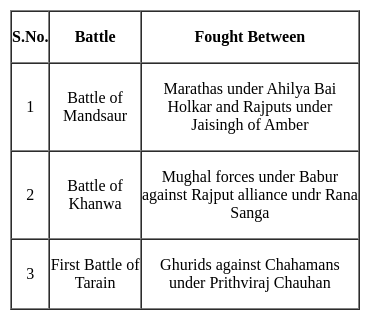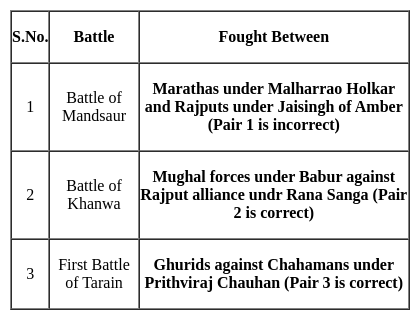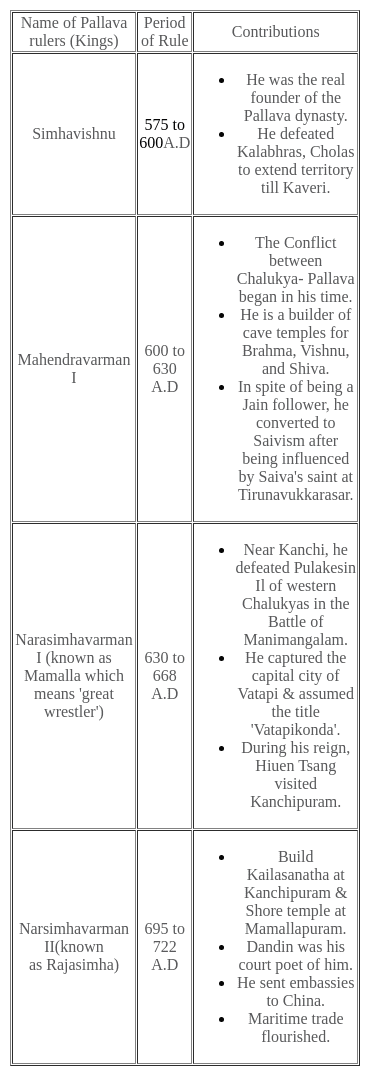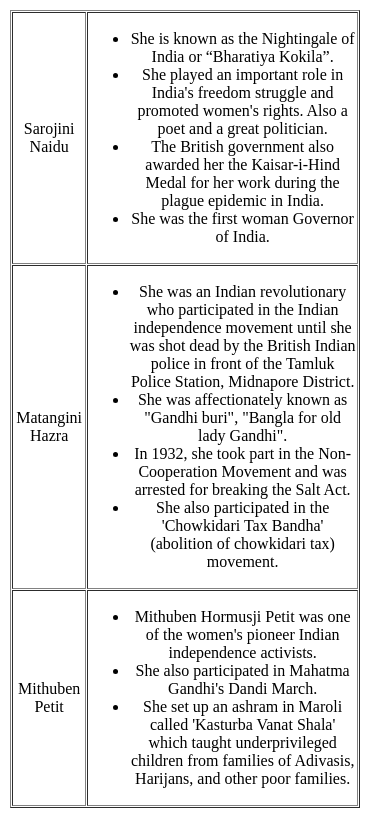APSET Paper 2 Mock Test - 9 (History) - AP TET MCQ
30 Questions MCQ Test APSET Mock Test Series 2026 - APSET Paper 2 Mock Test - 9 (History)
Which kingdom's ruler signed the treaty with British East India company in the year 1817 ?
Consider the following statements about caste-based movements. Which of the statements given is/are incorrect?
Consider the following statements:
Assertion(A):- Nizam-ul-Mulk was the wazir of the Mughal emperor Muhammad Shah, before he went on to form the state of Hyderabad.
Reason(R):- He was disgusted with the fickle-mindedness and suspicious nature of the Emperor and the constant quarrels at the court.
Consider the following statements with respect to the Kalighat folk painting:
- It was first of its kind in the Indian subcontinent that expressed subaltern sentiment and addressed customers directly.
- It started on a religious note however overtime social sentiment were expressed.
Which of the statements given above is/are correct?
Choose the incorrect statements:
1) Bahadur Shah made peace with Banda Bahadur, the Sikh chief after the death of Guru Gobind Singh.
2) However, the Bundela chief, Chhatarsal and the Jat chief Churaman joined hands with each other in the campaign against the Mughals.
Consider the following pairs:
- Ajanta cave: Buddhist in theme
- Ellora cave: Hinduism in theme
Which of the pairs given above is/are correct?
Which of the following is the correct order of the Vedic literature?
With reference to the Planning Commission of India, Consider the following statements:
1. It was established on 15 March 1950, with Jawaharlal Nehru as its chairman.
2. It was an executive body,
Which of the statements given above is/are correct?Which of the following statements is/are correct regarding the Swadeshi and Boycott Movement?
1. It was termed as a befitting reply for the Partition of Bengal.
2. Mass meetings were held all over Bengal where Swadeshi or use of Indian goods and boycott of British goods.
3. The Swadesi movement gave a great deal of encouragement to Indian industries.
4. Acharya P.C. Ray organised his famous Bengal Chemical Swadeshi Stores.
Which of the following statements about Mohiniattam is/are correct?
1) It is one of the important dance form of Kerala.
2) It is a solo dance performance that incorporates lasya and tandava styles.
3) It is a technique based on Kathakali.
Codes:
Which one of the following buildings is known as ‘Shan-i-Fatehpur’?
Consider the following statements regarding the Harshavardhana:
1. He was a Shaivite during his early years of life.
2. He defeated Chalukyas and made Kannauj his Capital.
Which of the above statements is/ are not correct?The treaty of Surat was signed between which of the following powers?
Choose the incorrect pair.
1) Heer Ranjha:- composed by Shah Abdul Latif
2) Tayaumanavar:- composed by Warris Shah
3) Risalo:- exponent of sittar poetry
Consider the following pairs.

Which of the above pairs are correctly matched?
Consider the following statements regarding the Bhakti Movement.
1. Bhakti means love and devotional surrender to God.
2. The term Bhakti first appeared in Vyasa’s Bhagavad Gita.
Which of the above statements is/are correct?The sepoys of Bengal Army around 1857 were mainly consisted of:
(A) Brahmins
(B) Sikhs
(C) Rajputs
Choose the correct option.
Which act was passed by Lord Canning's government in 1856 to prevent any kind of resistance from the sepoys against their deployment abroad?
Consider the following statements regarding Paika Rebellion.
1. Paikas were the traditional land-owning militia of Odisha and served as warriors.
2. Paikas rebelled back when armies of the East India Company overran most of Odisha in 1803, the Raja of Khurda lost his primacy and the power and prestige of the Paikas went on a decline.
3. The commission set up by the British recommended that the hereditary rent-free lands granted to the Paikas be taken over by the British administration and this recommendation was zealously adhered to.
Which of the statements given above is/are correct?
Which of the following were the weaknesses of the Peasant movement?
1. There was an adequate understanding of colonialism.
2. The 19th-century peasants did not possess a new ideology and a new social, economic and political programme.
Select the correct answer by using the codes given below.
Which of the following is/are correctly matched in the context of medieval history?

Lord Dalhousie was appointed as the Governor-general of India in which year?
|
60 tests
|
























